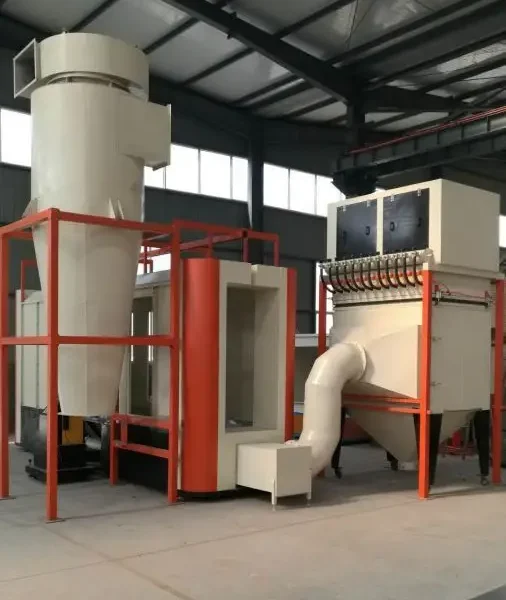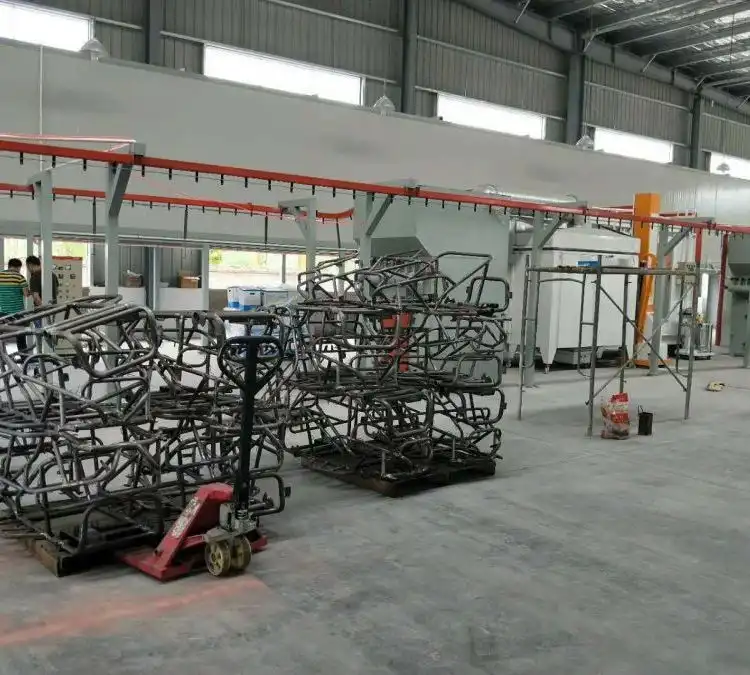
The most effective way to deal with electrostatic spraying dust deionization
The most effective way to deal with electrostatic spraying dust deionization
Dealing with **dust** and **static charge accumulation** during electrostatic spraying is crucial to maintain a clean and efficient coating process. **Deionization** is a key method to reduce static charge and minimize the attraction of dust particles. Here’s how you can effectively manage deionization during electrostatic spraying:
### **1. Use Ionizing Air Guns (Static Eliminators)**
Ionizing air guns or **static eliminators** are widely used to neutralize static charges on surfaces and help control dust:
– **Ionizing air guns** release **positive and negative ions** that neutralize static charges, reducing dust attraction on the workpiece and surrounding area.
– **Place the ionizing air gun** near the spray area, before or after spraying, to help clear the air of charged particles.
– Ensure that the air pressure is controlled (around **60-90 psi**) to avoid disturbing the sprayed coating.
### **2. Proper Air Filtration and Exhaust Systems**
Maintaining a clean environment around the spraying area is essential:
– **Install high-efficiency particulate air (HEPA) filters** in the booth to trap dust before it reaches the workpiece.
– **Use positive pressure** in the spray booth to prevent dust from entering and accumulating on the surface.
– **Increase airflow** around the area using blowers or fans to help clear out dust particles and control airflow to keep contaminants away.
### **3. Anti-Static Mats and Grounding**
Effective grounding of the equipment and workpiece is crucial to reduce static buildup:
– **Use anti-static mats** or **flooring** in the spray booth to reduce static buildup from personnel or equipment movement.
– Ensure that the **workpiece and spraying system** are grounded properly to allow the charge to dissipate.
– Connect the spray booth or spray system to a **grounding system** to prevent excess charge from accumulating.
### **4. Electrostatic Discharge (ESD) Control Equipment**
– Use **ESD-safe workstations** that help control static buildup in sensitive areas.
– Ensure that the booth, conveyor, and all equipment are equipped with **ESD-safe features** to minimize the risk of dust attraction due to static charge.
### **5. Environmental Control Systems**
Maintaining proper environmental conditions in the spray booth can also help:
– **Control the humidity** in the booth. A humidity level of **40-60%** is ideal for reducing static buildup and keeping dust from sticking to the surface.
– **Optimize booth temperature** to avoid static charges caused by excessive dry conditions or electrostatic build-up due to high temperatures.
### **6. Pre-Treat the Workpiece**
Before starting the electrostatic spraying process, treat the workpiece:
– **Clean the workpiece thoroughly** to remove any dust or debris before spraying.
– You can use **anti-static wipes** or sprays on the surface to reduce dust attraction before and after coating.
### **7. Regular Maintenance**
To prevent static and dust issues from recurring:
– **Regularly inspect and clean ionizing equipment** to ensure it’s functioning properly.
– Replace ionizer **tips** and **filters** when they wear out or accumulate debris.
– Ensure that air nozzles, fans, and exhaust systems are **free of dust** buildup.
By using these techniques, you can greatly reduce the dust that accumulates during electrostatic spraying and improve the overall quality of your finish. Would you like more details on any specific equipment or method mentioned here?
electrostatic powder coat
electrostatic powder coated
electrostatic powder coating aluminum
electrostatic powder coating booth
electrostatic powder coating bullets
electrostatic powder coating canada
electrostatic powder coating cast bullets
electrostatic powder coating cup gun
electrostatic powder coating customized-kaijing
electrostatic powder coating equipment manufacturer
electrostatic powder coating equipment manufacturers

